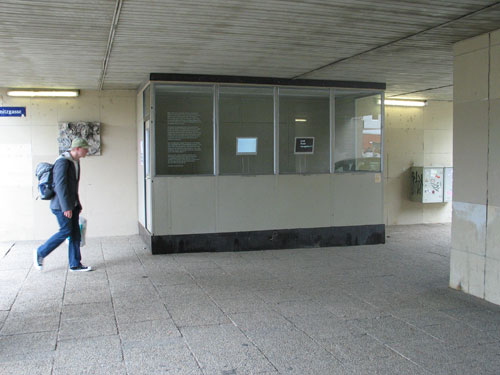Klub Zwei,
Black and White.
The Back of the Images.
A/GB 2003
On 19 April 1943 German troops entered the Warsaw ghetto to begin the final round of deportations. They met with unexpected resistance. The Warsaw Ghetto Uprising continued for 20 days before it was quashed under the command of SS Brigadeführer (Major-General) Jürgen Stroop. Of those who survived the Warsaw Ghetto Uprising, 7,000 were deported to Treblinka death camp and 42,000 to the SS concentration camps in the Lublin area: Majdanek, Poniatowo and Trawniki.
As a “commemoration” of the liquidation of the ghetto, a report was commissioned from Stroop by SS-General Governement in Kraków. The Stroop Report was essentially a photo album bound in black leather with a title page, “The Jewish Quarter of Warsaw is no more!” [“Es gibt keinen jüdischen Wohnbezirk in Warschau mehr!”] It was divided into three parts: a summary of SS operations, daily communiqués and approximately 54 photographs taken of the uprising with handwritten captions in gothic script. One of the photographs, which shows a young boy with his hands up standing among those arrested, surrounded by German troops, was captioned, “Pulled from the bunkers by force.” [“Mit Gewalt aus Bunkern hervorgeholt”] This photograph would become an icon of the destruction of European Jewry and one of the most widely used images of the Holocaust.
The original Stroop Report is kept at the Instytut Pamieci Narodowey (IPN) in Warsaw. The National Archives and Records Administration (NARA) in Washington, DC, hold a microfilm copy, made in September1945 and used as evidence in the Nuremberg Tribunal. Both the IPN and NARA consider that photographs from the Stroop Report are in the public domain. This means that, apart from paying a fee for a print, anyone can reproduce them free of charge.
Janina Struk, Photographing The Holocaust. Interpretations of the Evidence, London 2004
